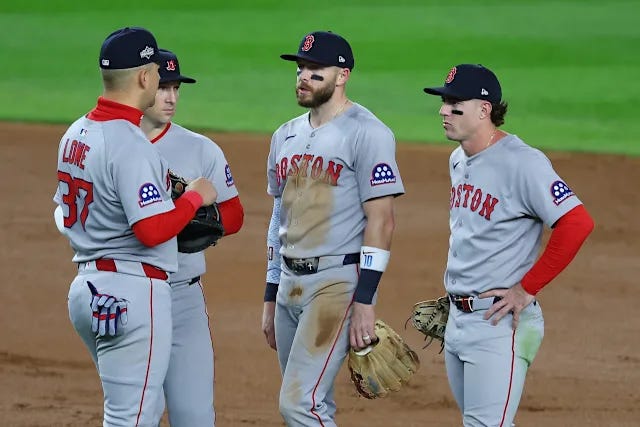Red Sox Digest: Final Report Card (Part 1 — The Infield)
If you can field it, you can keep it.” — a policy Boston tried for most of 2025
We’re back in the registrar’s office to close the books on the infield that powered, pestered, and periodically petrified us all summer. Below is the Final—graded on a curve shaped like a roller coaster—paired with quick callbacks to your July 15 midterms.
Grade Key: Production (stats & impact), Availability (did you actually play baseball?), Defense (do…
Keep reading with a 7-day free trial
Subscribe to Red Sox Digest to keep reading this post and get 7 days of free access to the full post archives.


